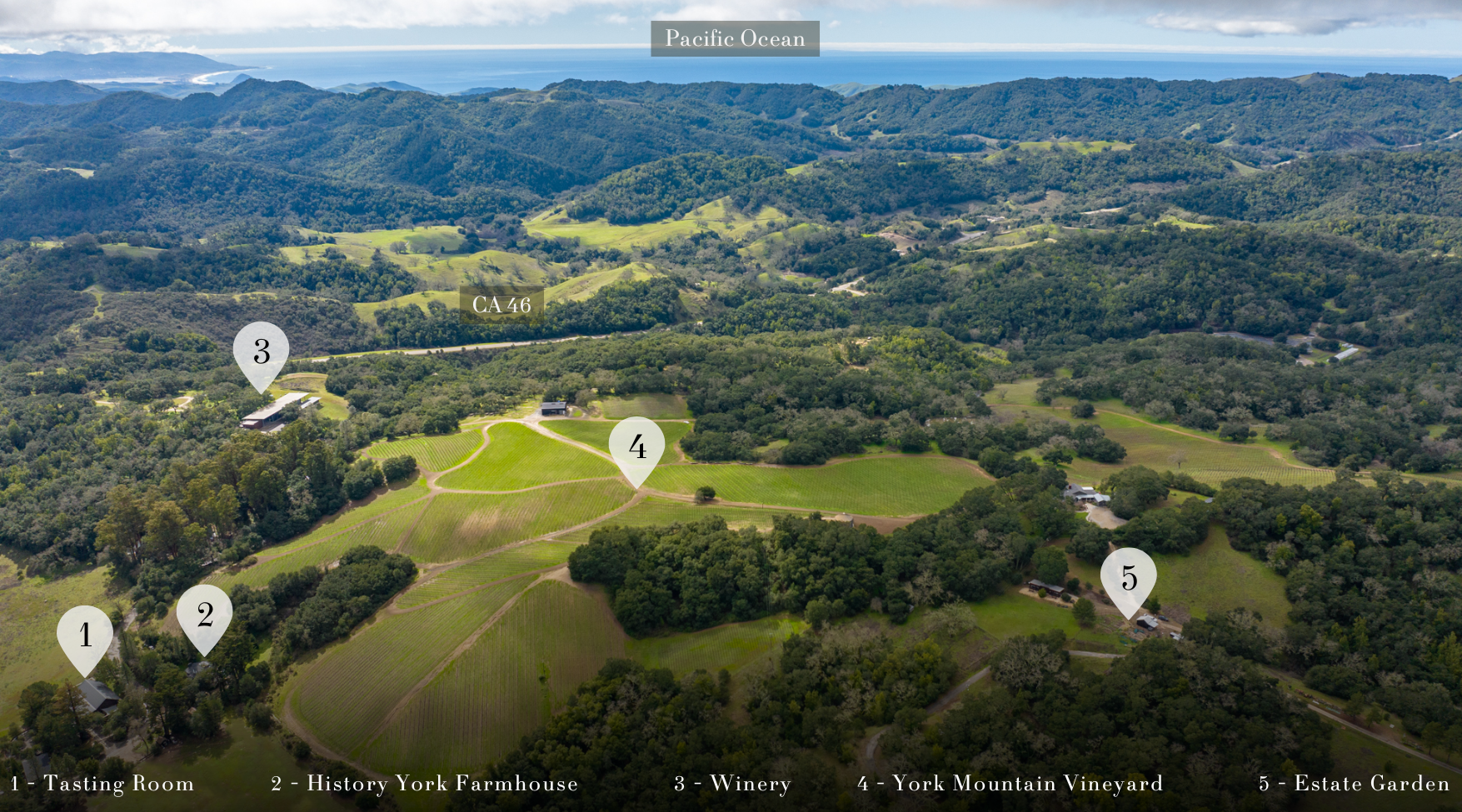Current Pours VINPRESSIONS®
And How to Read Them (Swipe left for more information)
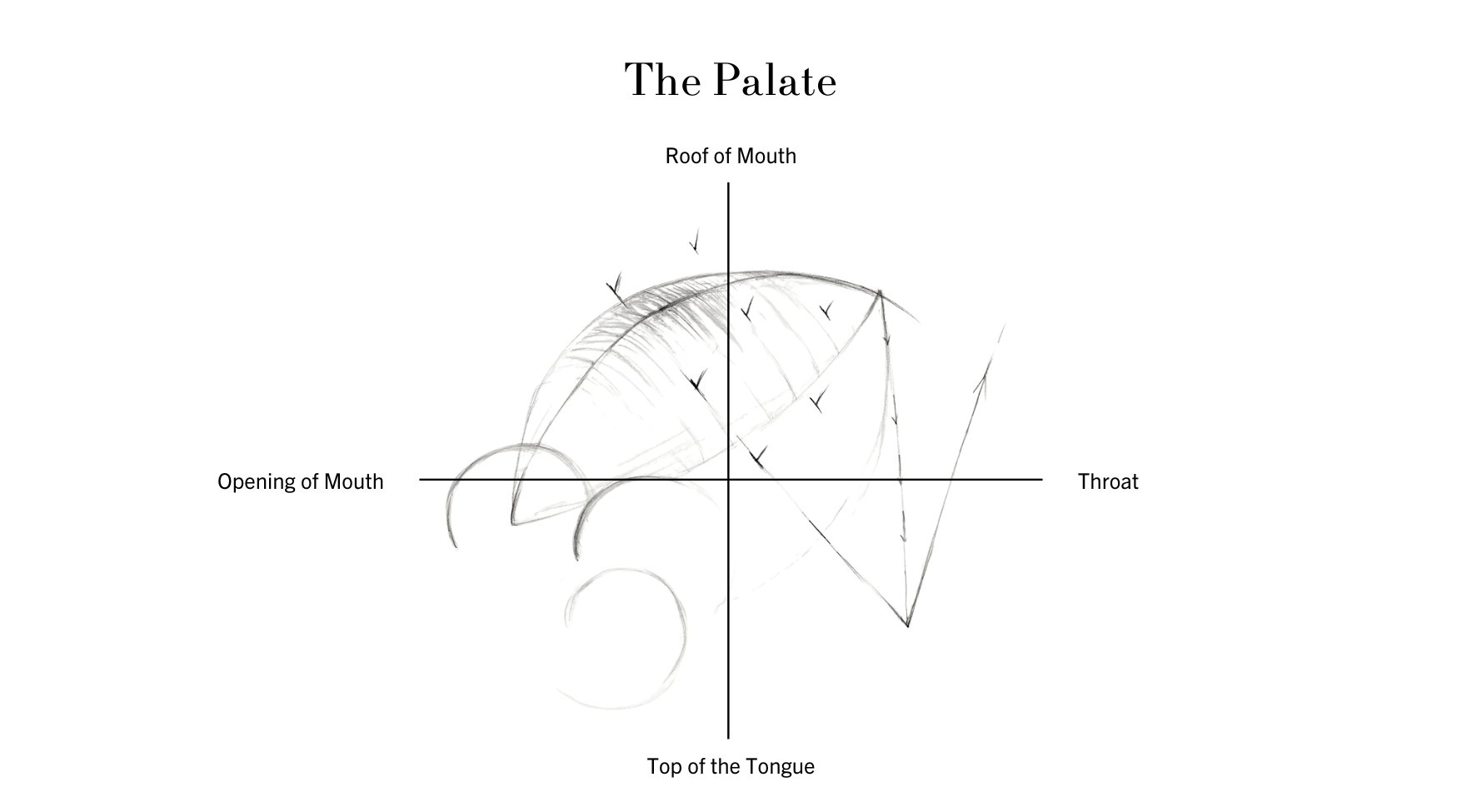

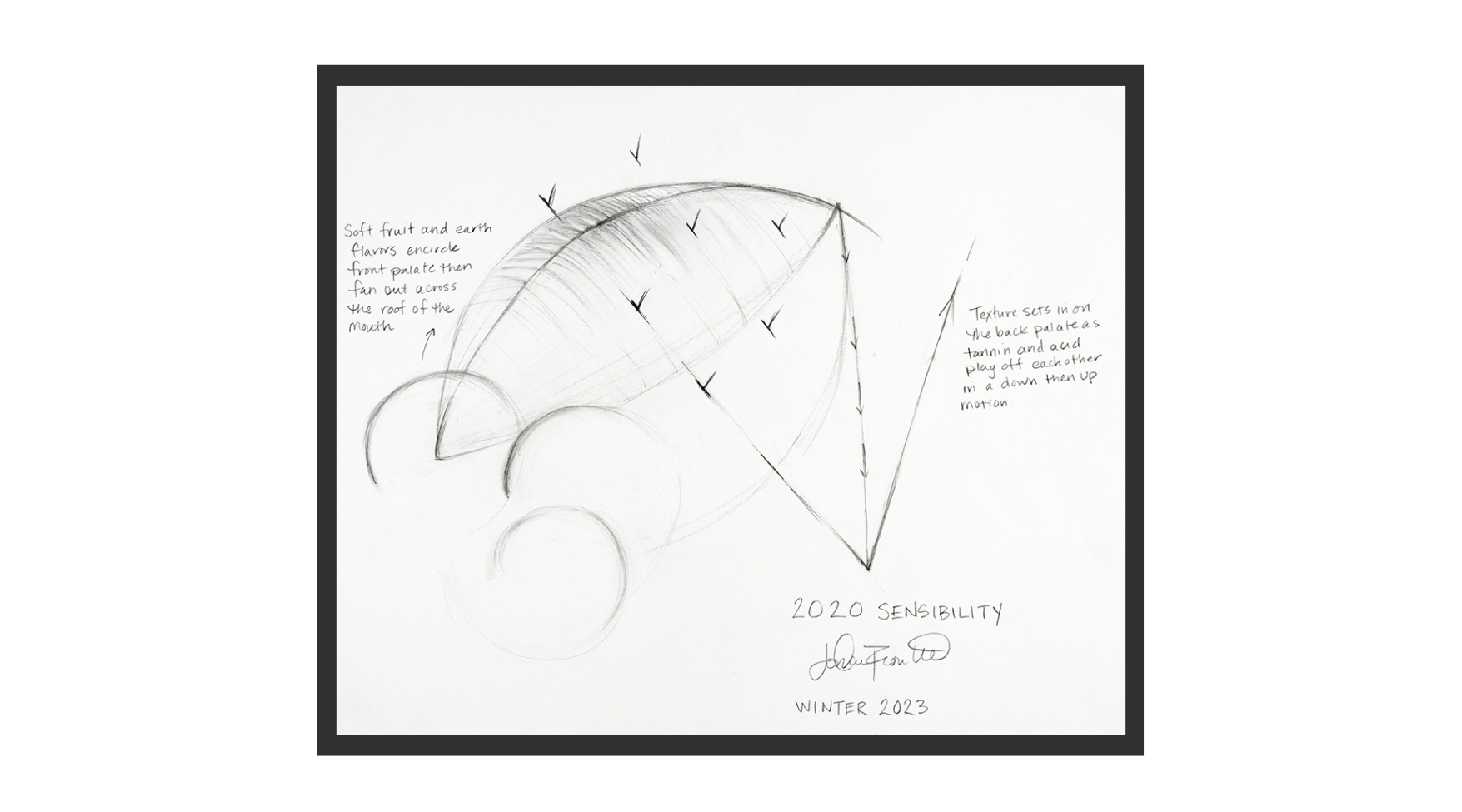
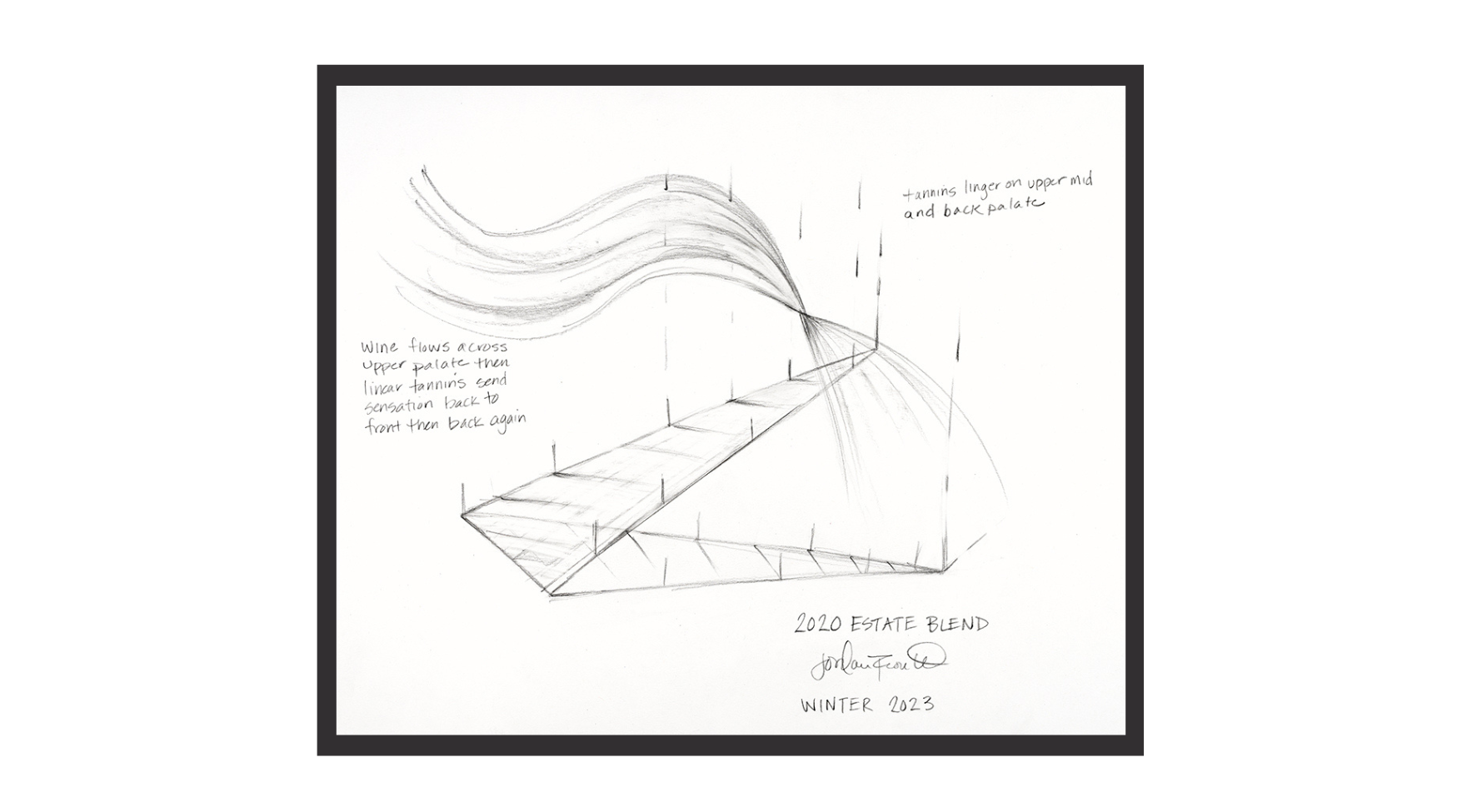
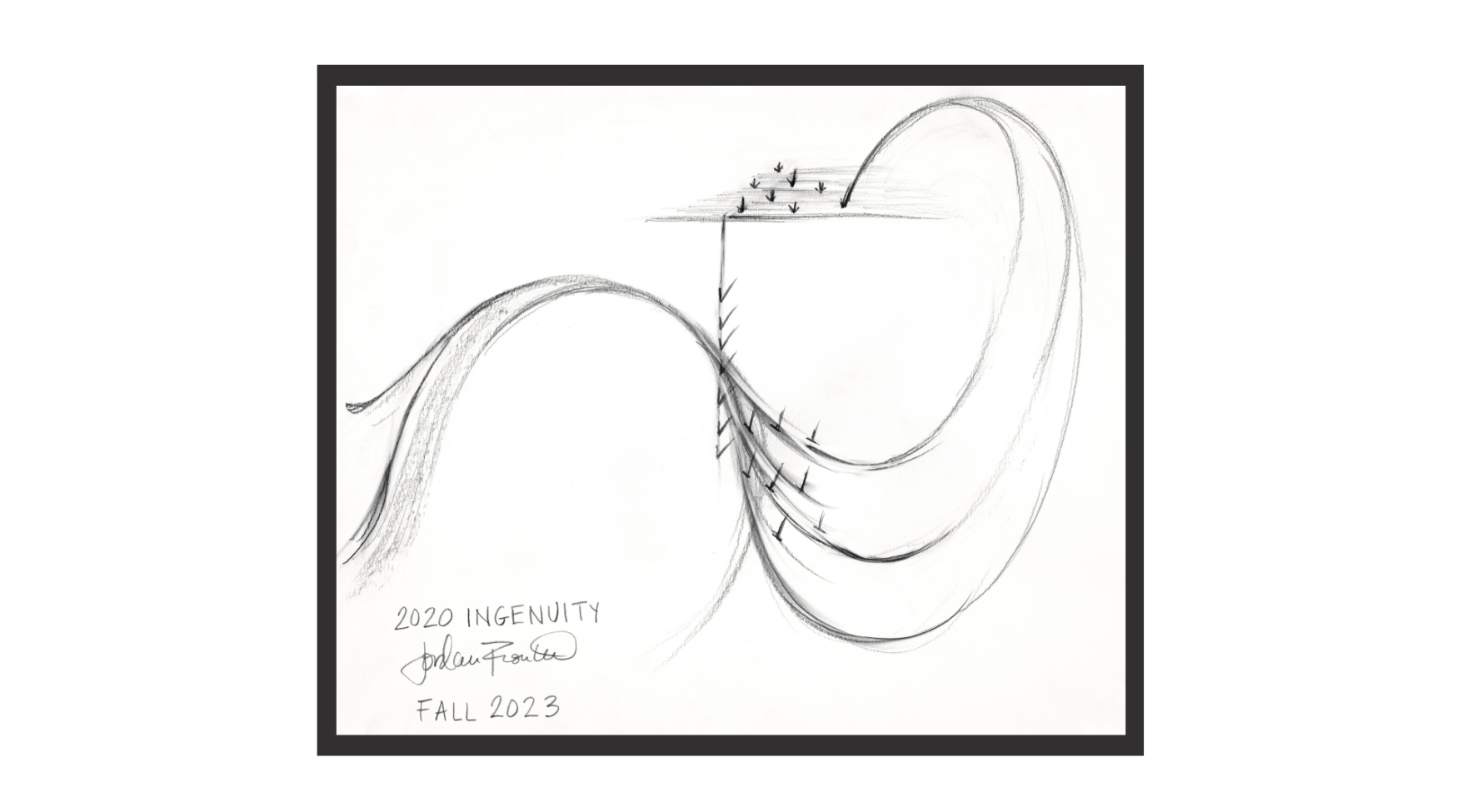
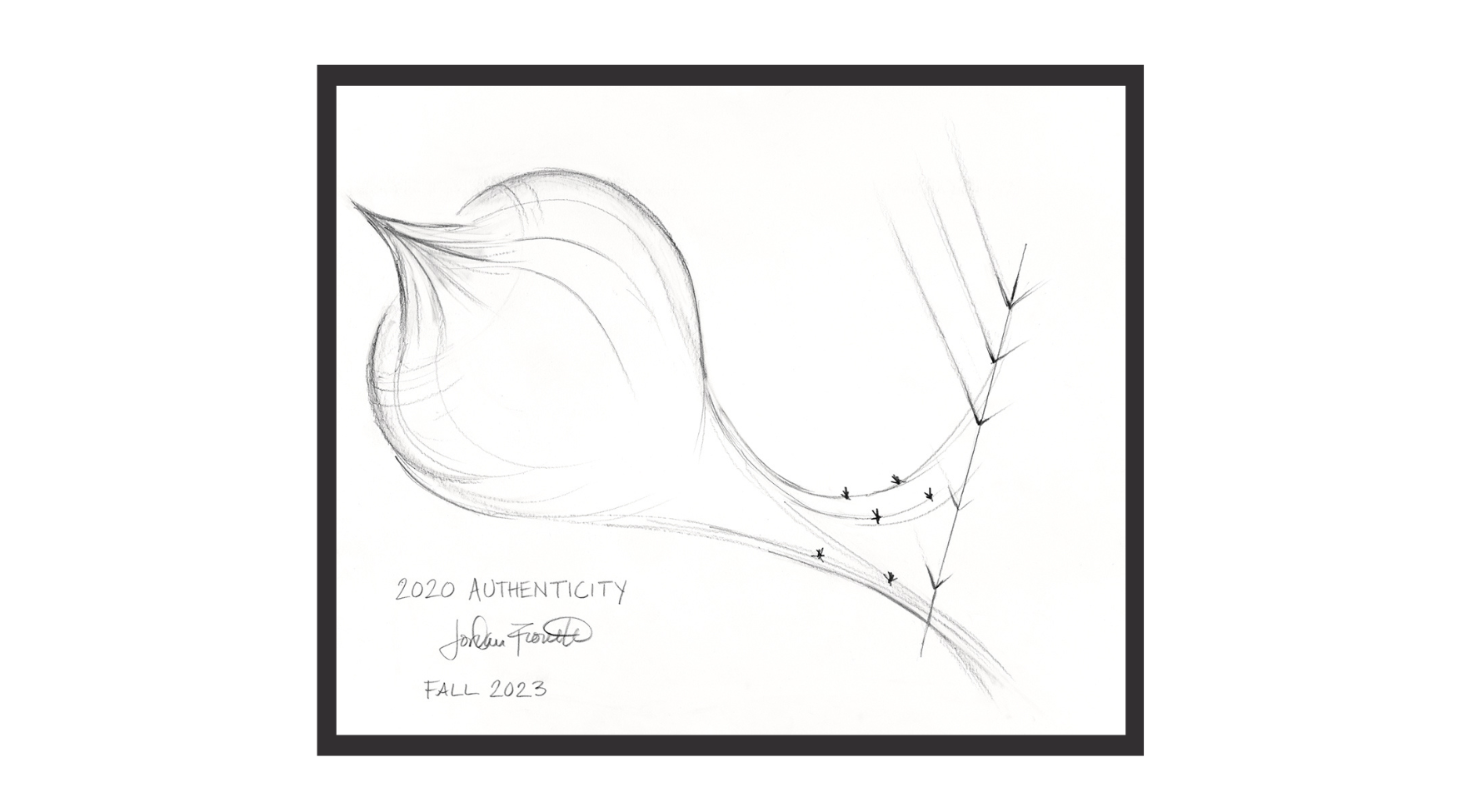
The Legacy
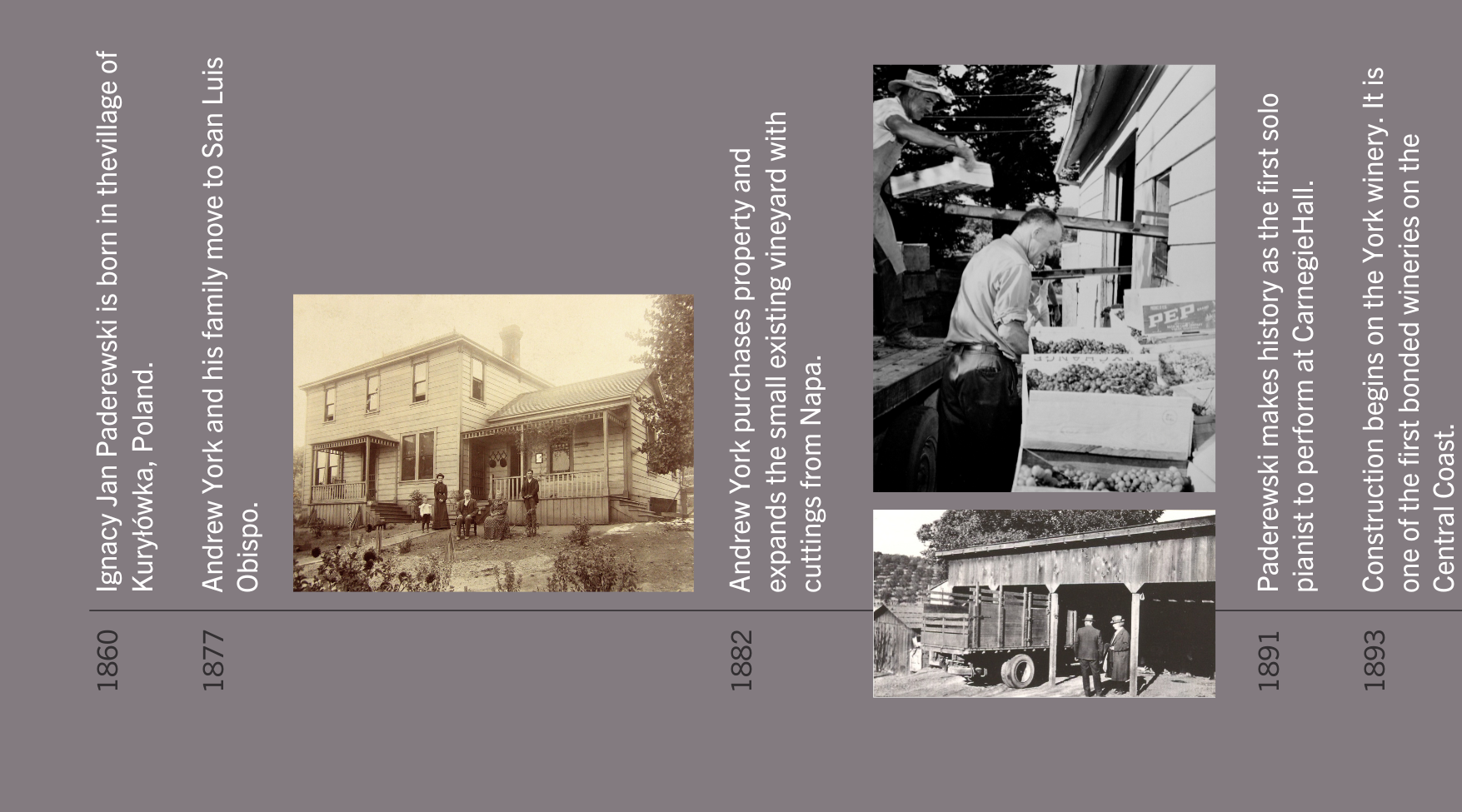
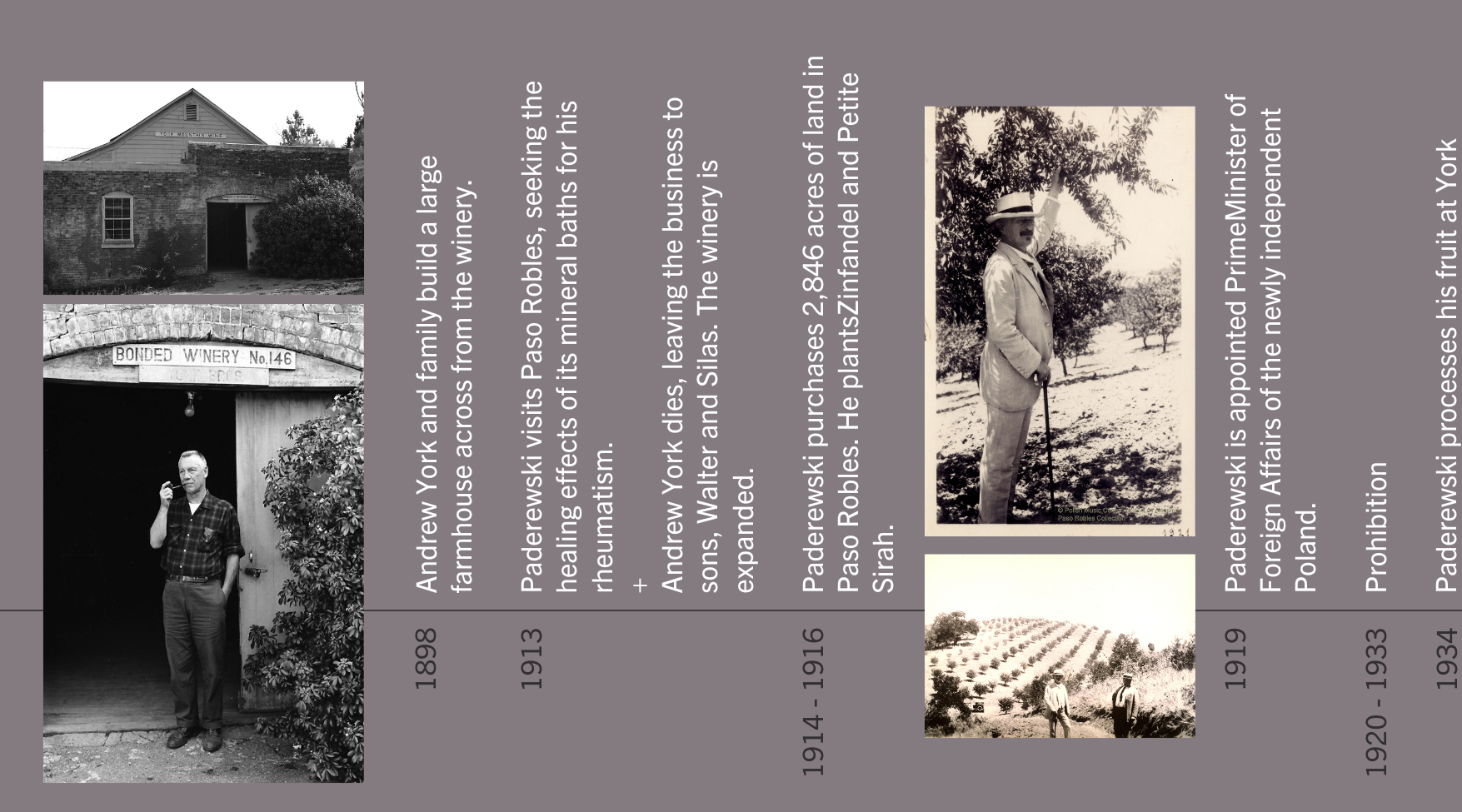


Concrete Vessels
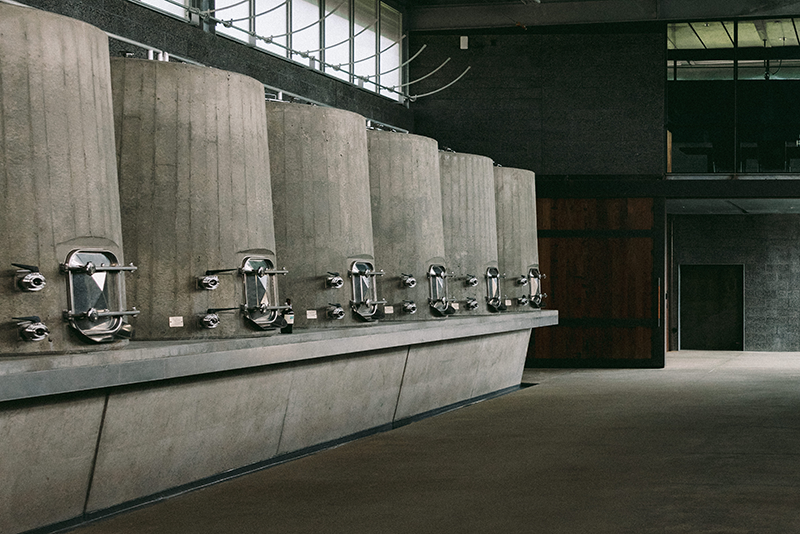
CONCRETE FERMENTERS
The Basics
We have two types of concrete fermenters in our winery. One set (pictured on the left) was purchased in 2014 from Vino Vessel (made in Paso Robles). The second set (pictured on the right) was purchased in 2020 from Nico Velo (produced from the Dolomites in Northern Italy).
These tanks are used solely for fermentation. They have large 36” lids that are helpful with pump-overs and punch-downs but do not work well for long term storage; as a result, we do not age wine in these concrete beauties. The tanks impart some minerality during fermentation, and the thermal dynamics of the concrete aid in the fermentation as well. The thick concrete walls hold in the warmth and/or cold when we need it.
Why the conical shape?
The conical shape provides more cap compression/ submersion (cap= the combination of grape skins and seeds that rises above the fermenting wine during alcoholic fermentation). Color and flavors are extracted when this cap is submerged into the fermenting wine. The conical shape puts pressure on the cap even when we’re not performing a pump-over or punch-down, which allows for some extraction to happen at all times.
Fun Facts
The board-formed design on the outside of these tanks complements the design elements throughout the winery. “Board-formed concrete” is the name for a process of patterning concrete that leaves a wood grain image on the finished face of the concrete. Back in the day, farmers used boards to structure the concrete needed for the foundation of their buildings, so to honor the farmers of York Mountain, we utilize this practice in most of our concrete structures at Epoch. We laid in different wood for each concrete pouring of each tank, and we love the way it looks!
Glycol tubes were placed into the five-inch-thick walls to allow us to cool and heat the wines when necessary.

CONCRETE TULIPS
What wine do we age in our Concrete Tulips?
One is used to ferment our Grenache Blanc. The other two are for red wines, typically our Grenache based blends.
The Basics
The Tulips are come from Nico Velo and are made with concrete from the Dolomites in Italy. They hold 580 gallons.
Why are they shaped like tulips?
The shape allows for slow but complete settling, unlike the eggs which never settle.
Concrete vs. Oak Aging
Reds in concrete have a freshness, heightened minerality, and rusticity about them. Tannins don’t evolve as much in concrete as they do in oak. This is because wine in concrete is exposed to less oxygen during the aging process and there is no oak tannin involved. These two elements change the tannin profile of wines over time.

CONCRETE EGGS
What wine do we age in the Concrete Eggs
Grenache Blanc
The Basics
Our eggs come from a company called Nombolt in France and hold 180 gallons.
Why are they shaped like Eggs?
Because of the “egg” shape, the wine is continually flowing inside the vessel and does not settle. The wine is in constant contact with its lees (broken down yeast and sediment), which enhances the wine’s ultimate weight and creaminess on the palate. Imagine the lees settling on the lower half of the egg shape and building up until it creates a mini avalanche, which mixes the lees back into the wine.
How does the concrete impact the flavor?
For Grenache Blanc specifically, the concrete helps bump up the pH a bit and adds a fun mineral edge to the wine.
Fun Facts
We bought two Eggs in 2012, and Jordan named them Dipsy and Laa-Laa. We bought a third, slightly different Egg in 2013, so it was named Nu-Bee.
York Mountain Property Map
